Whether or not you should use a revolver for concealed carry is a contentious topic argued by gun enthusiasts and professionals alike. Like concealed carry semi-automatic pistols, revolvers have a lot of pros and cons when it comes to concealed carry. Here we aim to take a look at things to consider when selecting the best revolver for concealed carry as well as some of the pros and cons of selecting carrying a revolver in general.
Using a Revolver for Concealed Carry
Pros
One of the best things about a revolver is they tend to be reliable. In general, if you squeeze the trigger on a revolver it’s going to fire. In a world where you might be relying on your pistol firing when you need it most, this is a very important attribute.
The other great thing about a revolver is it’s simply, part of the reason it’s so reliable. Unlike a semi-automatic pistol, you don’t need to worry about slide locks, magazine release buttons, stove-piped rounds, and improperly seated magazines. As long as you have unspent rounds in the cylinder chances are the weapon will fire, making the revolver ideal for anyone who might not be comfortable with using a firearm (although we always advocate extensive training if you want to carry concealed). Revolvers are fairly easy to conceal and many models will easily fit in a purse, pocket, or waistband.
Cons
Revolvers have some pretty big cons, one being they are very difficult and slow to reload. Unless you’re a world-class competition revolver shooter, reloading a revolver will be slow and cumbersome. Further, revolver clips (called moon clips) are difficult to carry as they can be bulky and less slip than a concealed carry semi-automatic pistol magazine. This means you’re usually limited in your round capacity which for concealed carry revolvers is typically around 5-6 rounds.
Another con with revolvers is their trigger weights. Because revolvers often omit a safety they come with a heavy stock trigger. These trigger pulls are long, heavy, and hard to manage during rapid fire. Some revolvers offer a double-action/single-action trigger that reduces the weight but then you’re required to either first pull a double trigger action or carry with the hammer cocked. Due to a concealed carry revolver’s design, they also tend to come with a shorter barrel making them less accurate. This coupled with the difficulty of holding the pistol with both hands makes it less accurate than a traditional semi-automatic pistol
Is it Worth It?
Good question and the answer is: it depends. At the end of the day, your personal carry pistol will depend entirely on your own unique situation. We do recommend taking a look at our best concealed carry pistol guide to see some of the options and comparisons of the different concealed carry pistols available.
Personally, I like revolvers for concealed carry as a quick and easy option. If I don’t have the time to dress to carry my normal set up I can quickly and easily throw a revolver in my pants or jacket pocket and roll out where a semi-auto option would require a holster and the right cover shirt and maybe some extra mags and in the end a bit more thought. I also like throwing a revolver in my backpack or center console as a good backup gun. One thing I personally wouldn’t do is carry a revolver every day as my primary concealed carry option… but that’s just me.
Concealed Carry Revolver Calibers
There are a number of concealed carry pistol caliber options but the most popular version is the .38 special. Other versions include a 9mm, .45ACP, 410 shotgun shell (yes we are serious), .44 magnum and .357 magnum.
.38 Special

The .38 Special is a great concealed carry caliber because it’s small enough to fit 5-6 in a compact cylinder while still offering some pretty impressive stopping power. The .38 special or 9 x 29.5mm has almost the same diameter as a standard 9mm round but is much longer. This is a rimmed, centerfire cartridge designed by Smith & Wesson and was an extremely common round carried by police departments and government agencies from the 1920s all the way up to the 1990s. This is a much slower round than other common revolver rounds but it’s still very effective and accurate.
9mm
Not a lot of revolvers are chambered in 9mm but there are a few. The Ruger LCRx is a great 9mm concealed carry revolver. One nice thing about the 9mm cartridge is it’s shorter than a .38 special which means it can have a shorter cylinder and in turn an arguably more company pistol. The 9mm does fire faster than the .38 special which could lead to a more accurate shot group, although there are a lot of other things that come into play when it comes to accuracy.
.45 ACP

.45 ACP is a less common concealed carry revolver round but one of the most notable pistols you’d see is the Smith & Wesson Governor. The Governor is chambered in both .45 and .410 making it a real beast of a concealed carry gun. Some people will argue that a .45 is a better option to carry simply because it has more stopping power. While it’s true that it does have more stopping power we are huge proponents for shot placement over stopping power. Many people advocate 9mm for concealed carry because you will most likely get to carry more rounds than a 45. However, with the revolver, you are usually limited to 5-6 rounds, regardless of the caliber. For example, the Taurus Model 450, chambered in .45 Colt is probably the smallest .45 you’d find on the market and comes with a 5 round capacity. In contrast, the Smith & Wesson M&P 340 comes in a .38 special round and also has a 5 round capacity.
.44 Magnum

.44 Magnum is usually reserved for full-size revolvers and is a very powerful round, the most powerful according to Dirty Harry apparently. It’s a bit smaller than the .45 in diameter but it’s a lot longer simply due to its original design as a revolver round. The .44 Magnum makes for a formidable concealed carry revolver round, however, due to its size, it’s fairly uncommon in smaller sized pistols. One big fallback to using a round with this much kick is that you are going to sustain some pretty serious “kick” which will cause your gun to come off target making follow up shots difficult and inaccurate.
.22 Caliber

There are several concealed carry revolvers on the market that use a .22 caliber. While this round is a very small round and won’t inflict a lot of damage, it is easy to conceal and can offer a larger round capacity. It is pretty uncommon for someone to carry a .22 caliber revolver but it can happen. A few positives to carrying the round is it’s easy to control, ammo is very inexpensive and it’s compact. Even still, we’d strongly recommend not going with this option.
Single Action vs Double Action
When selecting the right revolver for you, you might come across the terms, single action and double action. If you don’t know the difference, don’t worry, we’re here to help.
Single Action
Single action means one action happens when you pull the trigger. The hammer drops and your weapon fires. This happens because you must first physically cock the hammer to the rear, and pulling the trigger simply sends it forward.
Double Action
Double action literally means that two actions are being performed when you pull the trigger. The first action cocks the hammer back and the second action sends the hammer forward, causing the weapon to fire. If the revolver you plan to purchase says it’s double-action, then it won’t be like in the movies where they physically cock the hammer to the rear, that’s single-action. Double action means the trigger does all the work for you.
Our Top Rated Concealed Carry Revolvers
We want to preface this with the disclaimer that we do not usually carry a revolver for concealed carry. We wrote an entire blog about our preferred concealed carry gun and the pros and cons of each option.
Smith and Wesson 642 Airweight
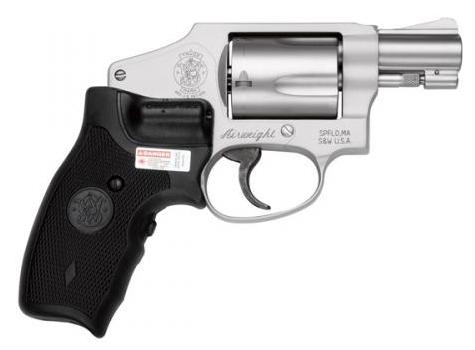
The Smith & Wesson 642 Airweight is our top choice for a concealed carry revolver. At 15 ounces it’s extremely light and a very non-invasive pistol to carry around. This is one of the most popular concealed carry revolvers on the market and for a very good reason. The 5 round cylinder and trigger offer a smooth consistent pull that will help ensure you’re putting rounds on target when needed.
Because the pistol is made with an aluminum frame and a steel cylinder it offers both a light and durable design that will withstand whatever abuse you throw at it. The 642 Airweight also features a snub-nose design making it ideal to carry concealed but also reduces its max effective range. If you’re looking for a solid revolver that you can wear in almost any attire you choose, the Smith & Wesson 642 Airweight is one of the best options around.
642 Airweight Specs
- Caliber: 38 S&W SPECIAL +P
- Capacity: 5
- Barrel Length:
- Overall Length: 6.3″
- Front Sight: Integral
- Rear Sight: Fixed
- Action: Double Action Only
- Grip: Synthetic
- Weight: 14.4 oz / 408.2g
- Cylinder Material: Stainless Steel
- Barrel Material: Stainless Steel
- Frame Material: Aluminum Alloy
- Frame Finish: Matte Silver
Smith and Wesson BodyGuard .38
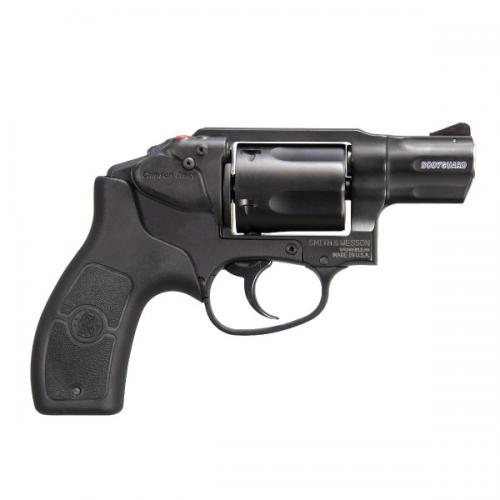
You should start noticing a trend with Smith & Wesson revolvers, they are all pretty solid. Smith & Wesson pretty much invented the concealed carry revolver game and their quality still stands among the best.
The BodyGuard .38 also features a light aluminum frame making it easy to carry. Like the Airweight it also features a short snub-nose barrel making it ideal for concealment but lousy for engagements over 10-15 yards. While there are many versions of the .38 special we prefer the Crimson Trace version. With ambidextrous laser controls, ambidextrous cylinder release, a smooth trigger pull, and a compact design this revolver is a solid option. With an MSRP of $539, it is on the higher end of pricing for revolvers but you certainly get what you pay for.
BodyGuard .38 Specs
- Caliber: 38 S&W SPECIAL +P
- Capacity: 5
- Barrel Length: 1.875″ / 4.8 cm
- Overall Length: 6.6″
- Front Sight: Black Ramp
- Rear Sight: Integral
- Action: Double Action Only
- Grip: Polymer – Gray
- Weight: 14.2 oz / 402.6g
- Cylinder Material: Stainless Steel with PVD Coating
- Barrel Material: Stainless Steel
- Frame Material: Aluminum Alloy
Taurus Judge
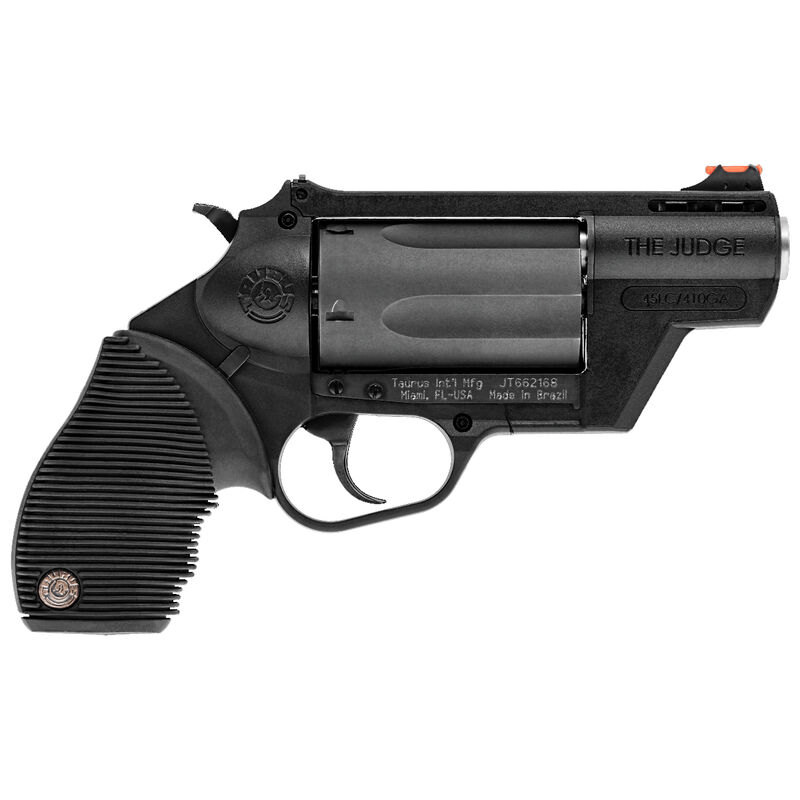
Carrying around the Taurus Judge is a bit of a game-changer. Chambered in both .410 and .45 you’re basically carrying around a pocket of hate. A .410 round is an interesting round to use for concealed carry since it doesn’t pack the same stopping power as the .45, especially if you get any sort of distance between you and your target. At 29oz this is certainly a lot heavier than the two previous models we just mentioned but it is still small enough to carry concealed.
Judge Specs
- Frame Size: Compact
- Capacity: 5
- Action Type DA/SA
- Caliber: 45 Colt
- Height: 5.10″
- Width: 1.50″
- Weight: 29.00 oz.
- Barrel Length: 3.00″
- Overall Length: 9.50″
- Front Sight: Fiber Optic
- Rear Sight: Fixed
- Safety: Transfer Bar
Ruger LCR .22
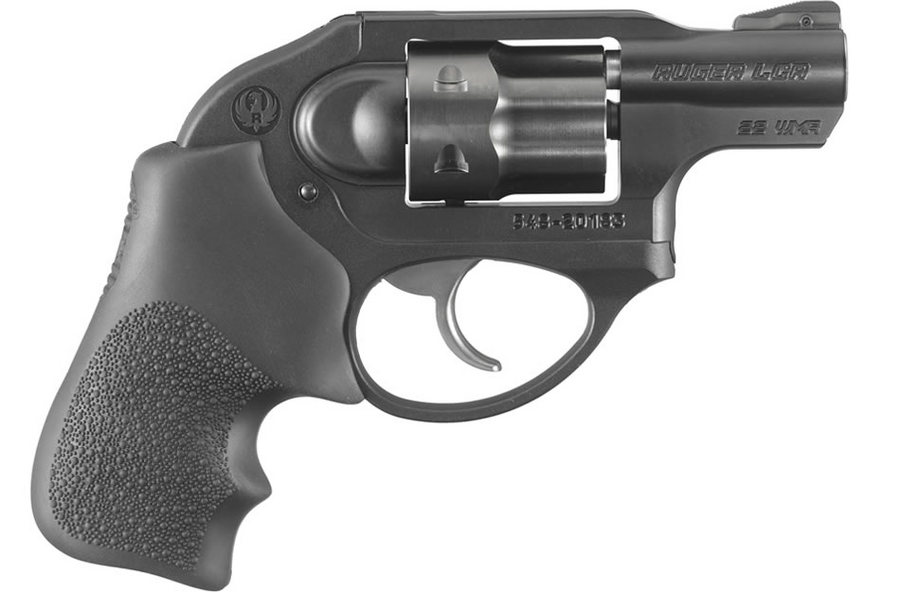
If you’re looking for ultimate concealment that still has the ability to have any sort of decent round capacity, consider the Ruger LCR .22. At 15oz and measuring 6.5″ long by 4.5″ high it’s easy to hold and conceal at the same time. While the revolver chambers in .22 offering less stopping power it does hold 8 rounds giving you more chances to put accurate shots on target. While we don’t usually advocate a .22 for concealed carry this one does actually serve a purpose and does a great job for what it’s built for.
LRC .22 Specs
- Grip: Hogue® Tamer™ Monogrip®
- Front Sight: Replaceable, Pinned Ramp
- Barrel Length:1.87″
- Cylinder Finish: PVD
- Twist: 1:16″ RH
- Rear Sight: U-Notch Integral
- Finish: Matte Black
- Weight: 14.9 oz.
- Height: 4.50″
- Overall Length: 6.50″
- Capacity: 8
- Grooves: 6






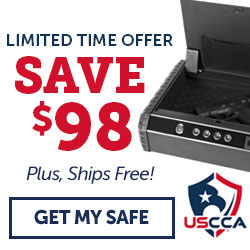
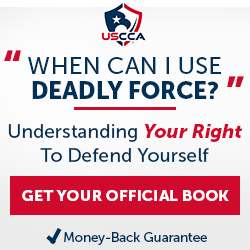
Leave a Reply
Your email address will not be published. Required fields are marked *